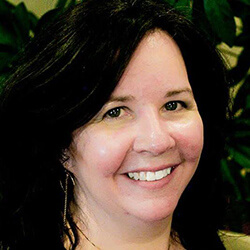Creating a Continuous Learning Culture in the Practice

Continuous learning, where we are steadily and intentionally learning new skills and expanding knowledge, is similar to being a lifelong learner, with the latter tending to be more on a personal or individual basis. Call it “having a growth mindset.”
In the workplace setting, demonstrating continuous learning as a core value helps our business and employees meet larger goals, improves workplace satisfaction, and impacts employee retention.
Recruiting, hiring, and onboarding new employees is always an involved and costly task for any manager, but in these months since we faced unprecedented office closures from the pandemic and then the subsequent “great resignation,” finding quality candidates has been daunting for many offices.
Surveys by Deloitte and others back up the value of a workplace where continuous learning should be a core practice. Employers who value ongoing learning are more attractive to millennial employees:
- 40% of employees with poor training will leave within the first year.
- 94% of employees would stay at a company longer if it invested in their career development.
- 86% of employees believe it’s important for employers to provide learning opportunities.
- 76% of Gen Z employees believe learning is the key to a successful career.
How Do We Implement This in Our Practices?
Making continuous learning a core value of our practice should be intentional and strategic, but that does not mean it needs to be a difficult shift. There are licensing requirements for most team members in a dental practice to maintain minimum amounts of CE, so this should not be an unreasonable and dramatic expectation.
- Use office goal-setting meetings with an annual planning meeting to review the wins and losses of the previous year and to set individual and office goals for areas to improve core knowledge. Discuss by whom and how that knowledge is to be attained and how this will impact the provision of service in the practice.
- Provide reimbursement for CE as a benefit and encourage its use.
- Provide time in an employee’s schedule for learning. This can be accomplished in a number of ways. Lunch and learns, the whole team attending in-person training, or where and when appropriate, allow an employee to block an hour of time to attend a webinar.
- Never before has access to educational resources been so easy. One silver lining to the pandemic was that online learning opportunities exploded. Courses formerly held in person shifted to webinars. Associations, coaches, speakers, and consultants shifted their content delivery to online formats. Fortunately, we are seeing synchronous in-person courses coming back, but there is still an abundance of learning opportunities at our fingertips from webinars (live and recorded), podcasts, online articles, and more.
- Helping employees connect with professional associations encourages access to social learning opportunities.
- Use team meetings as learning opportunities. Use vendor representatives for training during a lunch-and-learn. Cue up a recorded webinar during a team meeting and then follow up with a learn-repeat-do or summary by a different employee each month.
- Bring home the take-home. This is critical to making the most of a continuing education benefit. Let’s take your Doctor A as an example: I think we can all recall a time when Doctor A attended a CE program; it was probably something s/he made a significant financial investment in and came back to the office very excited about what s/he learned, leaving them eager to implement changes right away. And your team rolled their eyes and said to themselves, “this too shall pass – give him a few days and we’ll all go back to normal.” Imagine how demoralizing that is for doctors who, by nature, are often lifelong learners and want to be doing great dentistry for patients and create a successful practice. Now, imagine a different scenario. Doctor A returns from a CE program enthusiastically and holds a team meeting to share a summary of what the course was, why they’re excited, and what impact it will have on the practice. Team members are encouraged to ask questions and explore how it impacts their role, their patient care time, patient relationships, etcetera. A plan is created for how to begin implementing a new process, procedure, or method of communicating – whatever fire was ignited in your doctor. Someone on the team (or a doctor) becomes a champion for implementation and works with the team to make any changes, resolve unanticipated issues, etcetera. Progress is monitored at regular team meetings. This idea of bringing the take-home applies not just to Doctor’s CE but to all team members. Our hygiene team and, in some places, our dental assistants, have CE requirements tied to license renewal. Imagine an office culture where team members share what they have been learning with the entire team. The team engagement that results has a huge impact on workplace satisfaction.
- Ask. Invite team members to share areas of interest, encourage in-office subject matter experts, and encourage team members to share something they’ve recently learned. Something that may have come from content – webinar, podcast, course, publication or it could come from a recent experience with a vendor, an insurance carrier, or related to a patient encounter. Continuous learning occurs in formal and informal ways.
- Rather than encouraging team members to leave early, come in late, or clock out when your schedule starts to crumble, encourage them to watch a webinar or take an online course. This promotes the value of continuous learning and keeps your team from being upset at being asked to deal with having hours cut.
Additional Benefits to the Team
Speak to most dentists and dental office managers today, and you will hear that hiring in today’s climate is a terrible challenge. It’s not uncommon to hear that an office in desperate need of team members is offering wages far outside the expected range for existing workers in a similar job and region. The result is we are losing good team members because the lure of an immense salary increase is too good to pass up. How are we to compete when an employee is offered a $10 per hour or more increase at another office?
When we have a core value of continuous learning, our employees are continually increasing their knowledge base and their skill set and they position themselves to earn more. When team members can take on new responsibilities and free up their doctor’s time, office productivity increases making more resources available for employee wages. When we value a well-educated team and when the team demonstrates their expertise, it is easy to want to compensate them accordingly.
Another significant challenge we are facing is related to insurance reimbursements. Going out of network is a popular subject among doctors and dental practice managers alike. Moving to a fee-for-service model is attractive – no insurance write-offs are top of the list of reasons why they would make the shift. Like anything else in the practice, a decision like this is not to be taken lightly; articles detailing steps an office should take to successfully make this move are becoming prevalent.
Among many considerations when exploring this direction is how you will retain enough of the right patients to allow for a successful transition to fee-for-service. A team that values continuous learning and demonstrates its knowledge to patients will have an easier time converting patients to pay out of pocket than one where the team’s learning stagnated when providers received their degrees.
When team members are valued for their knowledge and expertise, they are more engaged, run offices more smoothly, and are generally happier.
Dentistry is a quickly changing field with new technologies, government requirements, insurance rules, and updated information emerging regularly. Demands on doctors, hygienists, assistants, and front office employees to stay on top of these developments increase. When the team sees that continuous learning is a core value, the office will be well-positioned to flex with changes in the field rather than reacting from a position of surprise. Inspiring our workers with a growth model instills pride and a sense of ownership that is so vital today.
About the Author

Jennifer Pujo, MAADOM, is the office manager at Merrimack Valley Dentistry and is a lifetime member of the American Association of Dental Office Management (AADOM). She came into the dental industry from positions with large and small technical sales organizations to work with her life and business partner husband, Jason. She credits the community she found within AADOM for helping her find her own career path in dentistry while helping to grow their practice.
During her tenure, Jennifer has helped grow the practice from a single employee to a talented team of 5 and has completed a commercial real estate acquisition, buildout, and practice move. Jennifer received her AADOM Fellowship (FAADOM) in 2018 and, in September 2022, was inducted as an AADOM Master (MAADOM).







